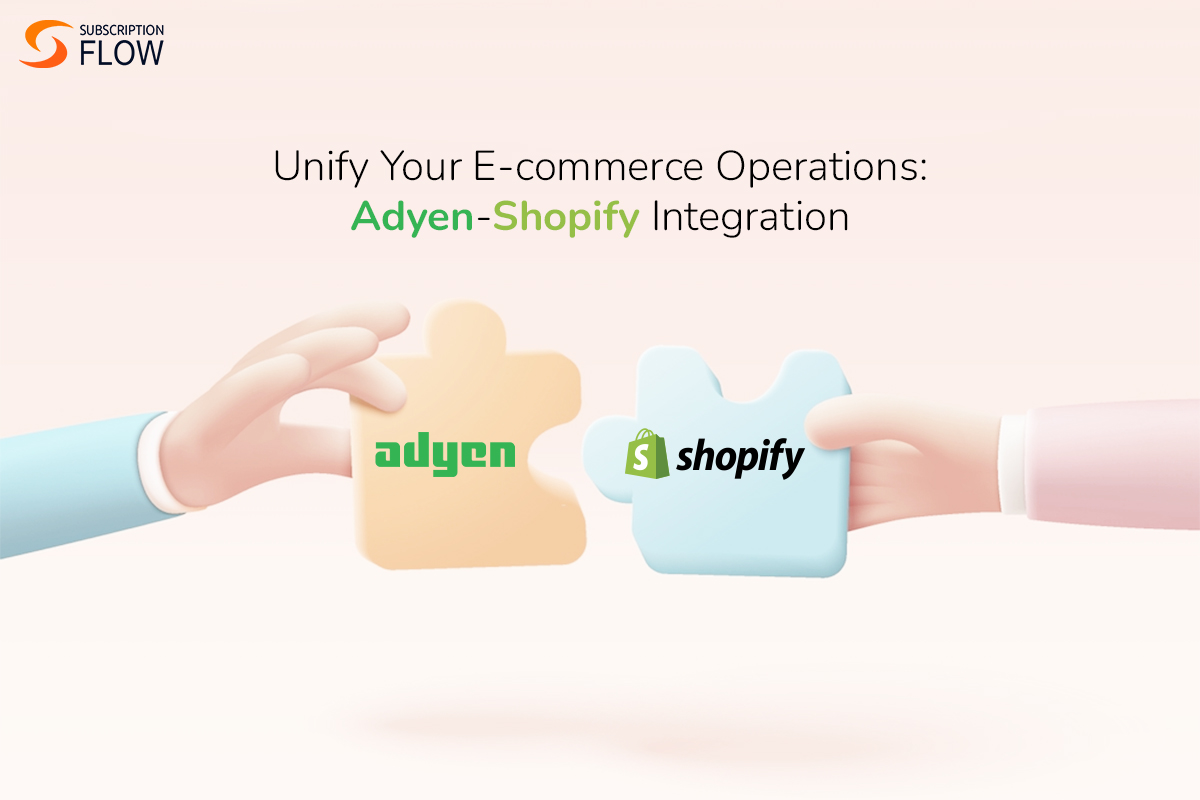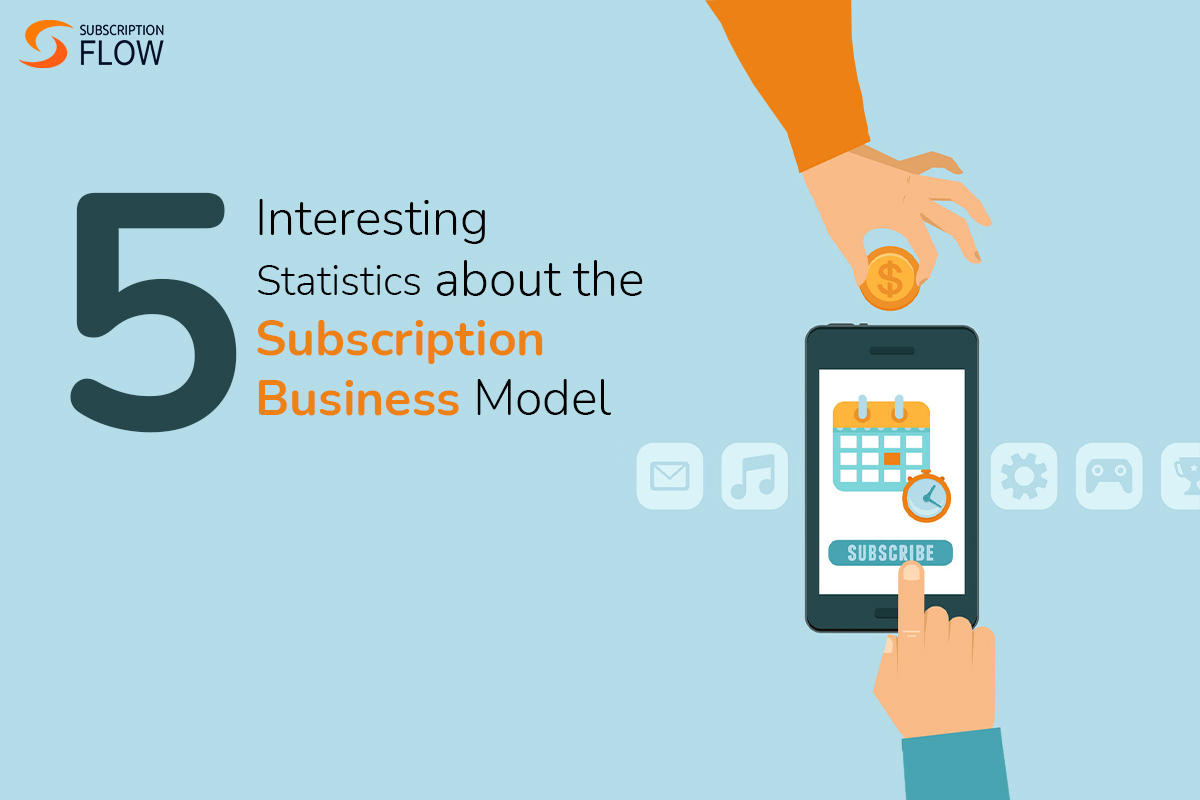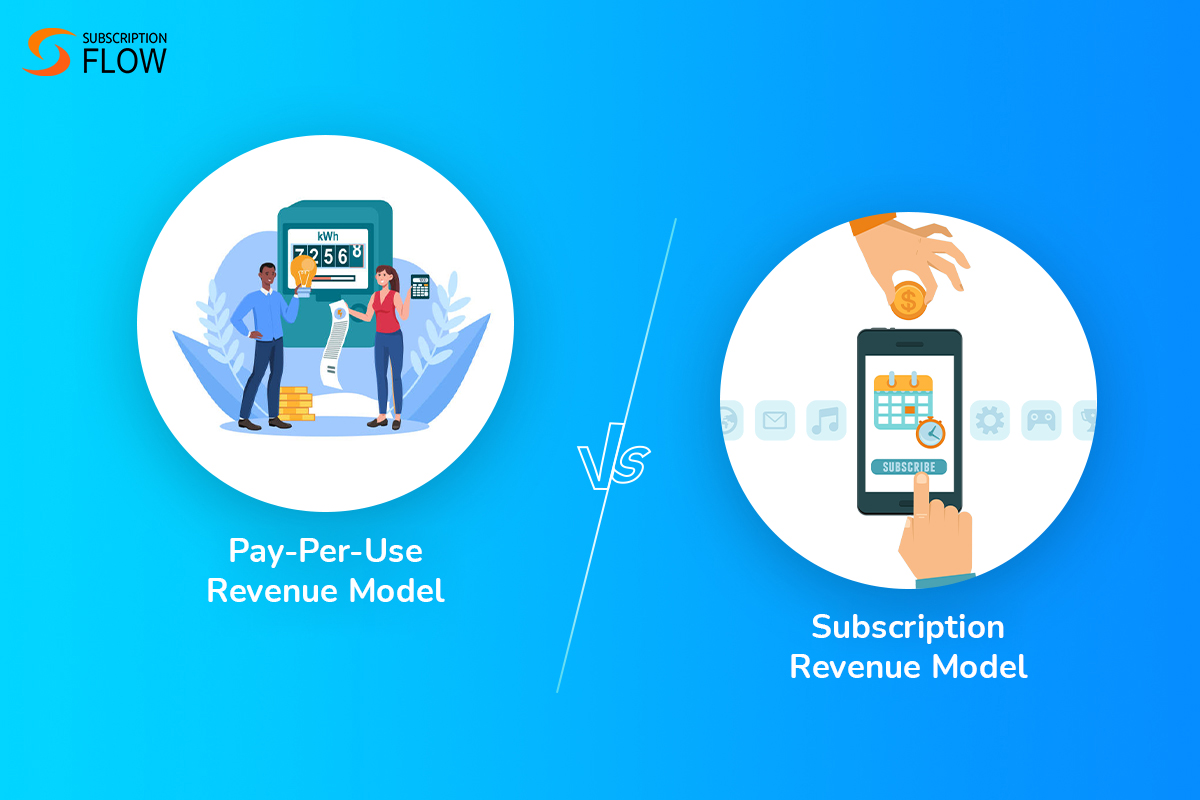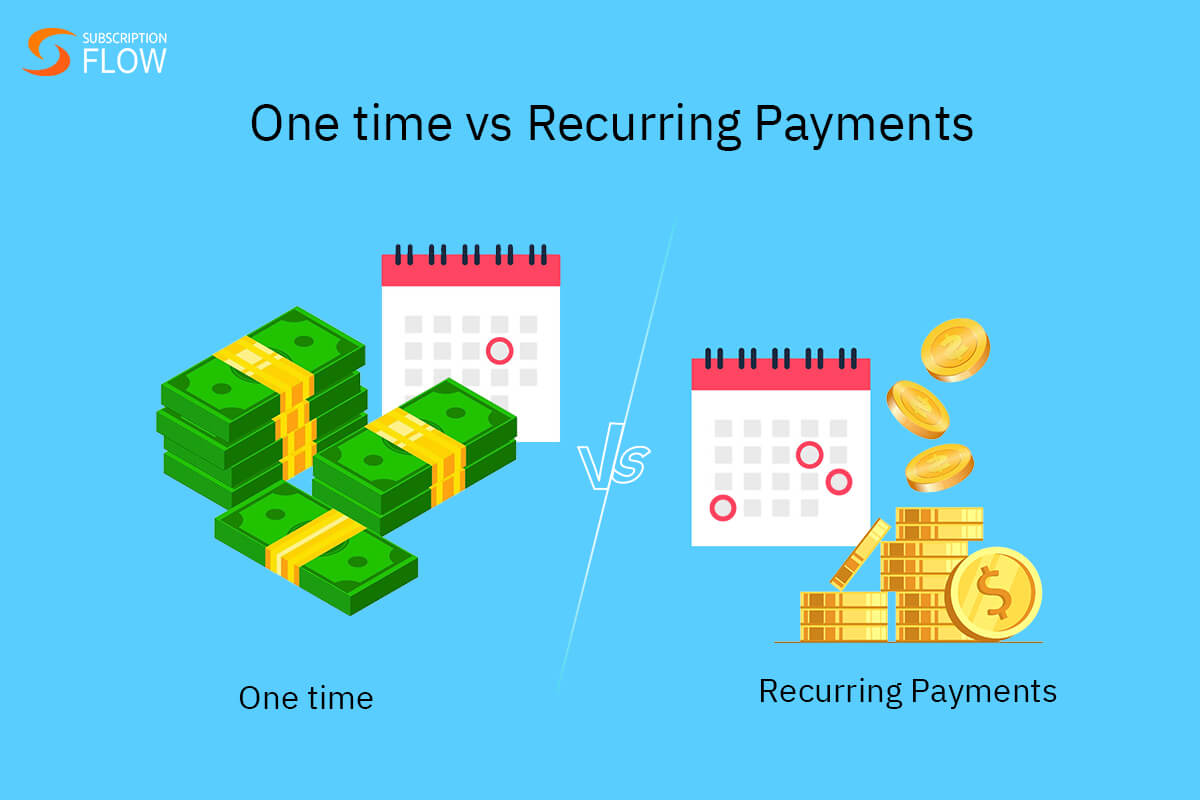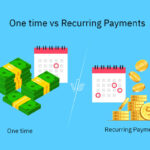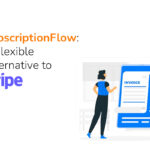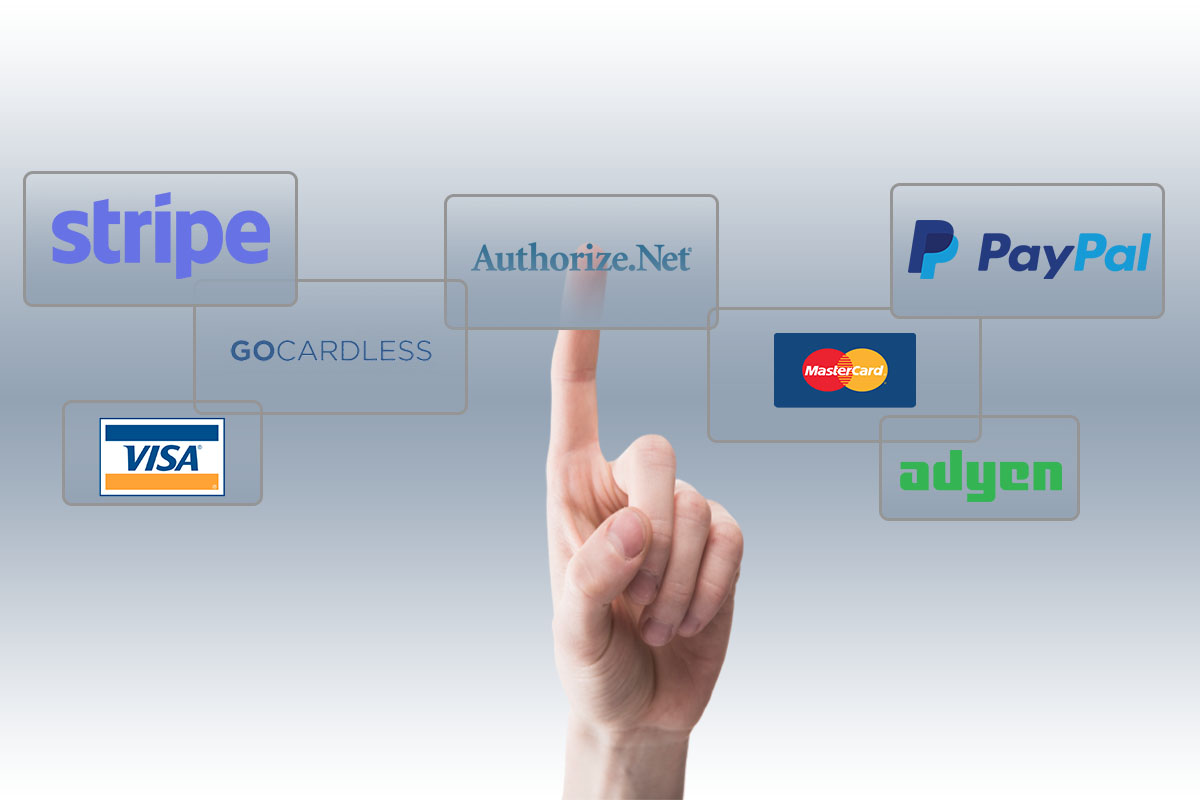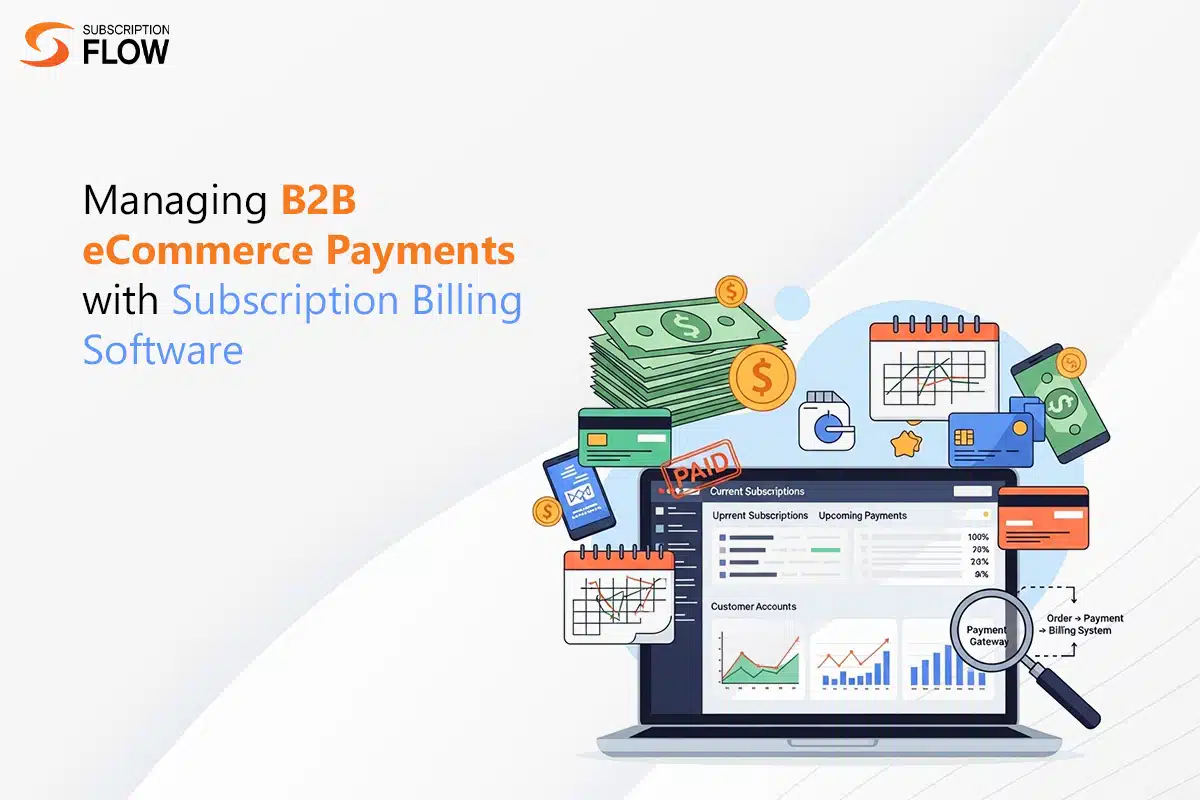
Taking the Stress Out of B2B eCommerce Payments with Subscription Billing Software
The B2B ecommerce industry is expanding, expected to reach sales worth $36.2 trillion by 2026. Subscription commerce is likely to contribute to a significant part of these sales as the subscription model is getting adopted increasingly. However, payments in the B2B ecommerce economy aren’t as straightforward as they are for B2C businesses.
B2B payments involve various complexities, and a lot of businesses are still stuck with outdated and legacy systems complicating billing even more. Business clients deserve as much flexibility and convenience in payments as individual customers. This calls for integration with robust billing platforms.
Advanced subscription billing software is perfect for accelerating intricate payment procedures, as it automates critical workflows. In this article, let’s discuss some of the challenges present-day ecommerce businesses are experiencing in B2B transactions, and learn how a billing software assists.
What are B2B eCommerce Payments?
B2B ecommerce payments are the transactions between two business parties, one being a seller, and the other, a buyer. They entail business clients buying physical or cloud-based services from other companies. In subscription ecommerce, such payments are made on a recurring frequency for continuous access to services.
Payment processes for B2B subscription ecommerce can be conducted through:
- a business’s ecommerce store
eCommerce apps such as Shopify, Adobe Commerce and Wix allow companies to create attractive storefronts. Such storefronts enable active transactions between customers and merchants. They may also be connected to subscription billing software to enable recurring payments.
- an online marketplace
Online marketplaces such as Alibaba and Amazon also support B2B transactions, such as wholesale. They integrate with many payment gateways to make payments digitalized and fast-tracked.
- SaaS platforms
SaaS platforms like SubscriptionFlow specialize in subscription billing for B2B vendors. They are used for offering clients access to online subscription services or physical goods. These platforms not only ensure smooth service access, but also automate difficult payment processes.
Difference Between B2B and B2C eCommerce Payments
This is how B2B payments differ from the B2C ones that make handling them more challenging:
- Larger invoices
Clients are issued larger invoices as their orders are usually bulk, or require greater online service access than individual users. Therefore, billing needs to be precise as there is greater revenue at stake here.
- Pricing based on custom contracts
In B2C subscription services, prices are usually fixed, or are according to usage. Customers choose from pre-designed subscription tiers. However, in the B2B scenario, customized contracts are created that suit the needs of the client. These contracts contain negotiated prices that have been tailored as per the service requirements of the client.
- Versatile payment terms
Individual subscribers need to pay without delay, and are given short grace periods to complete their payments. Moreover, they need to pay upfront. Unless they pay, they don’t get access to the service.
But this is not typically the case with B2B subscribers. They are offered more flexible billing terms, such as Net 30 or Net 60. So, they can pay within 30 or 60 days after receiving their invoice.
- Custom checkout
Individual customers have a short checkout process. They typically have to fill out their information on a single page, and then confirm payment. However, for B2B clients, checkouts are often multi-stepped and require more information for subscription confirmation, or for contract drafting purposes.
- Diverse payment methods
Whereas individual customers prefer payments via alternative methods such as PayPal and Apple Pay, B2B clients prefer methods like ACH and wire transfer.
- Longer subscription duration
Subscriptions are usually annual. Shorter durations are more popular in the B2C subscription domain. There are many reasons for that, one of them being client convenience. Business customers mostly prefer to pay in advance for the entire year so they don’t have to go through the hassle of monthly payments.
Top Challenges in B2B eCommerce Payment Processing
Here are the major challenges B2B businesses come across while managing payments the traditional way:
- Manual Invoicing and Reviewing
Invoices have to be created manually. This process is slow and error-prone, and can cause businesses significant losses if not handled properly. Invoices can either be paper-based or electronic.
In either case, in the absence of billing software, they have to be drafted manually. Paper-based invoices are more troublesome, as they have to be mailed to the clients physically, and can get easily misplaced as well.
Once invoices are created, they have to be reviewed for errors manually too. They need to be checked to ensure accurate details and payment calculation, so that clients won’t have to demand corrections later on.
- Manual Payment Reconciliation
After clients pay, businesses need to match the received payments with their invoices. This is to ascertain that the payments received are complete and accurate. Manually reconciling every client’s payment takes significant time.
Similarly, this process is also time-taking with legacy billing software. This software does not offer integration with accounting tools. So businesses have to feed the invoice data into their accounting platform themselves.
- Delayed Payments
Manual payment flows result in payment delays. If invoices are paper-based, payment collection takes the most time. That is because mailing invoices, then passively waiting for clients to pay them can be very time-taking.
Similarly, receiving payments via checks is also slow and inefficient. Electronic payments can also be delayed depending upon the client’s selected payment method.
- Support for Flexible Terms Required
B2B clients require more flexible terms for payment, such as Net 30. Businesses must have the capability of tracking payment deadlines, and applying late fees where necessary. If the payment process lacks flexibility, and if there are only one or two payment methods available, this can add friction to the clients’ transactions.
- Higher Transaction Costs
Since clients have to pay large sums upfront, businesses have to pay higher transaction fees for processing these payments too. For instance, if a business accepts payment through credit card, it has to give up a significant portion of the payment to card processing fees.
- No Recurring Payment Automation
Without advanced billing software, there is no automation. Subscription payments cannot be collected automatically. They always have to be paid manually. If clients’ data is not saved in a software, they have to go through entering their payment details and other relevant data again and again for paying.
Why Modern Billing Software is The Solution
Advanced subscription billing software has powerful features that combat the above-mentioned challenges, and streamline B2B ecommerce payments. These include:
- Automated Billing
Businesses can automate their complete payment processes. This includes generating invoices, processing payments, tracking invoices, adjusting charges, applying discounts and so on.
Billing software also tracks billing cycles and dates on its own, and issues invoices accordingly. So clients have both options. They can either opt for automatic payments, or manual payments.
Since the software has clients’ billing details saved, they don’t have to manually enter data even if they opt for manual payment. Automated billing also cuts down operational costs and prevents payment delays.
- Custom Invoicing with Flexible Payment Terms
Invoices can be customized according to different customer segments. Each client can be assigned different payment terms based on their preferences. Billing software keeps track of all the payment schedules, and sends reminders ahead of time. In case of delays, it applies the predetermined late fees to invoices automatically.
- Multiple Payment Methods
Robust billing software supports all the necessary payment methods that facilitate B2B ecommerce transactions. These include:
ACH: Automated Clearing House is a payment system that works in the US only. It can be used for both credited and debited payments, meaning payment collection can be both client or business initiated. It has lower fees compared to cards, and processing takes around 1-3 days.
Wire Transfer: Wire transfers are faster, and are more suitable for cross-border transactions. However, they come with higher fees too.
Credit and Debit Cards: They require a longer payment processing time, especially credit cards. Transaction fees are also higher compared to ACH. There is also a risk of chargebacks.
Direct Debit: Initial payments take 4-6 days to settle. After that, processing follows a 3-day schedule. It is more cost effective compared to wire transfers and cards, and slightly more expensive than ACH. Direct debit is a great option for recurring payments as they are merchant-initiated. It supports automatic payments too for lesser delays and failures.
- Multiple Billing Models
Modern systems support a variety of billing models, such as tiered and usage-based. Businesses might implement any of these based on what goes best with their services. For example, they can opt for usage-based billing if they offer a digital service whose consumption varies dramatically.
- Role-Based Access
Billing software allows service access based on roles. A B2B client might require subscription licenses for 50 of its employees. However, it may not want them all to access all the service’s features. That is because employees belonging to different departments have distinct roles.
If they are all offered the same package, it might incur more costs for the client, or might lead to unauthorized access. The business can actively solve these issues by offering role-based access to the client.
This feature ensures that failed payments are recovered as fast as possible. The billing software allows businesses to automate payment retries. It also sends customers payment reminders, and notifications to update their payment method in case the failure persists.
- Integrations with eCommerce and Accounting Platforms
Good subscription billing software allows seamless integrations with different platforms. For instance, the ecommerce and accounting platforms. It can work as a connecting link between the two, helping process subscription orders and payments, as well as automating reconciliation processes.
How SubscriptionFlow Supercharges B2B eCommerce Payments
To embrace the evolving B2B payment trends, businesses need integration with SubscriptionFlow. It is a well-oiled billing engine that supports automatic payments, invoice reminders, integration networks, and much more to make B2B transactions frictionless.
Here are some of SubscriptionFlow’s standout features:
- Automatic Discount Application on Invoice
Businesses can offer clients discount codes that they can enter at checkout. SubscriptionFlow applies them to their total charges accurately. Businesses can also offer automatic discounts at early-sign up, or according to customer loyalty, or according to the number of subscription licenses bought, etc.
When clients are eligible for any type of discount, SubscriptionFlow applies that to their invoices, and presents charge deduction in the invoices too.
- Self-Service Portals
B2B clients can have access to self-service portals where they can monitor their subscription activity. They can view their previous invoices, change payment method, track their service usage if applicable, and so on. These portals foster operational transparency, and gives clients more control over their subscription.
- Multiple Currency Support
The ability to invoice in multiple currencies is undoubtedly an important one for cross-border operations. A business can acquire B2B clients from multiple countries, and still give them a personalized payment experience. SubscriptionFlow supports a vast number of currencies, and facilitates real-time currency conversion.
- Integration with Tax Management Tools
To sell internationally, businesses need to be compliant with the tax laws of different regions. SubscriptionFlow integrates with software like Avalara that make compliance hassle-free. It also connects businesses with accounting systems like Sage that facilitate automatic revenue recognition.
- Range of Payment Gateways
Stripe, PayPal, Braintree, and Adyen are just a few of the gateways that SubscriptionFlow supports. With a vast network of gateways available, businesses can offer different payment methods according to the preference of their clients.
- One-Click Renewals
Renewals can be requested earlier than their due dates too. Clients can benefit from the one-click renewal feature to secure future service access earlier. This feature can help them secure the current pricing for the upcoming cycle. If they follow a yearly subscription, then they can avoid the expected cost increase for the next year.
- Actionable Performance Insights
With SubscriptionFlow B2B ecommerce businesses can view their key analytics in visually appealing formats such as charts and graphs. They can also generate reports on them. Client acquisition rate, retention and churn rate, total number of sales, and revenue trends are some of the analytics that they can view.
Leave paper invoices behind! Do billing with SubscriptionFlow and stay ahead of B2B payment trends.


